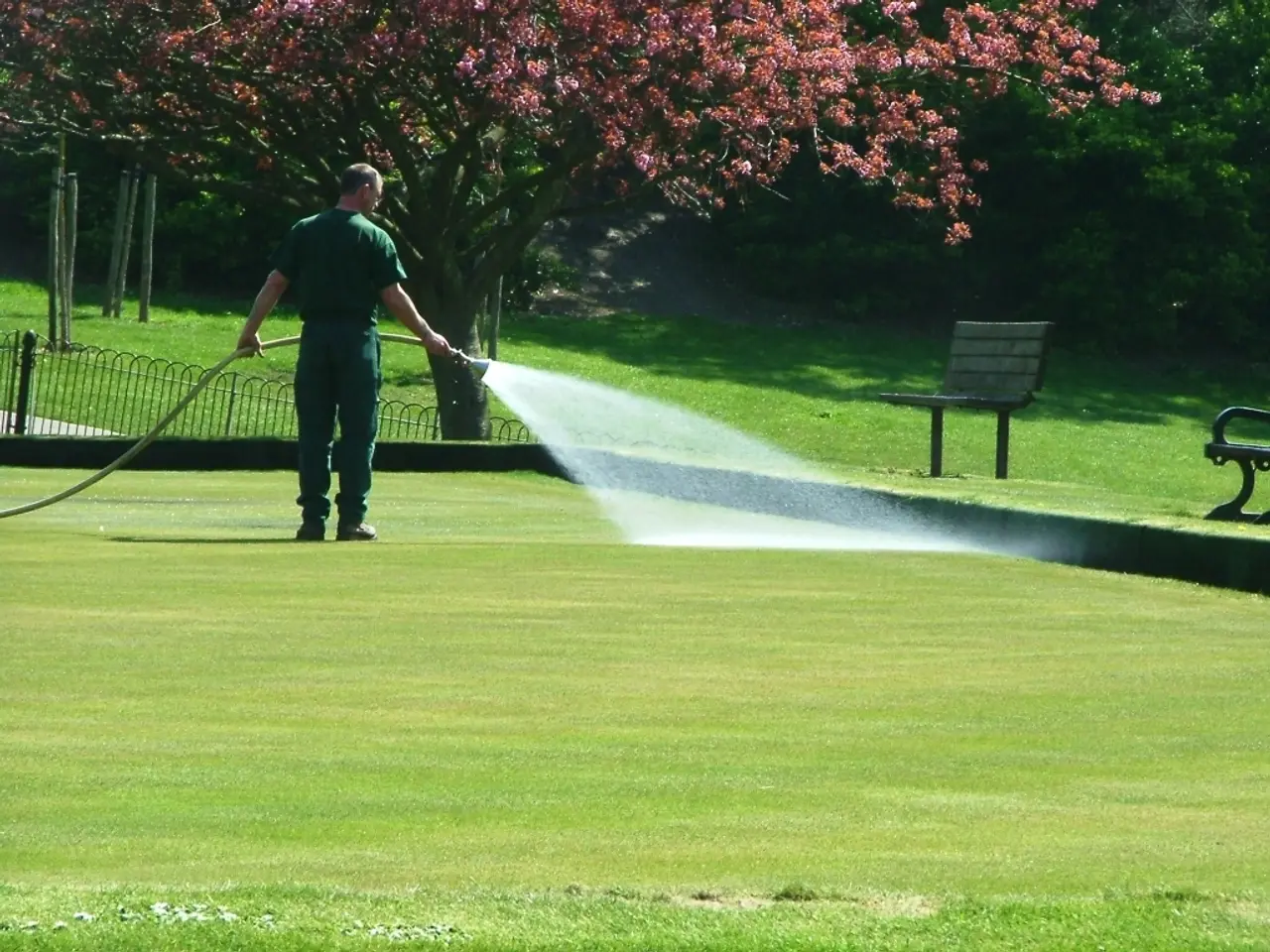Irrigate Raised Beds Efficiently using Drip Irrigation Technique for Ample Growth with Minimal Resources
Drip irrigation systems are an effective way to water raised beds, providing a focused application of water that minimises water splash, evaporation, and foliage contact. These systems come in two primary types: rigid drip systems and flexible T-tape systems.
Rigid drip systems are more expensive but last longer, making them a good choice for long-term investments. On the other hand, flexible drip tape, also known as T-tape, is cheaper but only lasts for a season or two. However, both types share the potential issue of water freezing in the components during cold winters, causing tubes to split.
To choose, install, and winterize a drip irrigation system for raised beds, follow these key steps:
Choosing the System
Begin by measuring your raised bed dimensions and mapping your garden layout, noting plant zones and water source location. Based on your plants' water needs, select dripline or emitter tubing. For compact beds and containers, a ¼" soaker dripline works well, with flow rates typically 0.4–0.8 GPH. This type should be UV resistant. For heavier feeders, emitter tubing with 6-8 inch emitter spacing is suitable, while 12-18 inch spacing fits low-maintenance plants.
For even water delivery across varied elevation or pressure, use pressure-compensated tubing. Essential components include a backflow preventer, filter, pressure regulator, tubing, emitters or drip tape, and necessary connectors. Timers or fertilizer injectors are optional but helpful.
Installation
Before installation, flush tubing to prevent clogging. Secure tubing with staples or fittings, using micro fittings (¼") to branch tubing efficiently. Cover tubing with mulch or soil to protect from UV damage and temperature extremes. Connect the system to an outdoor faucet using a backflow preventer, filter, and pressure regulator to maintain system integrity and water quality.
Consider watching step-by-step tutorials for practical setup tips, such as the detailed 30-minute video on drip system installation for raised beds.
Winterizing the System
Shut off your water supply and turn off any timers or controllers. Drain all water from tubing and hoses, either by elevating them or using low-pressure air to clear residual water and prevent freezing damage. Insulate above-ground components such as filters, valves, and backflow preventers with foam covers or insulation.
Disconnect and store removable parts, including batteries from controllers if applicable. Cover exposed sprinkler heads or drip emitters with protective caps or domes. If unsure about winterizing properly, consider professional services to avoid costly damage.
By carefully planning, selecting appropriate components tailored to your raised beds, installing with attention to preventing clogging and damage, and properly winterizing each season, you can ensure efficient irrigation, healthier plants, and system longevity.
Maintaining a lifestyle that prioritizes sustainable gardening, one might consider installing a drip irrigation system for home-and-garden projects. When choosing a system, it's essential to assess your raised beds' dimensions and water needs, selecting either dripline or emitter tubing, such as the ¼" soaker dripline for compact beds, or pressure-compensated tubing for even water delivery across varied elevation or pressure. After installation, proper winterization is crucial to prevent water freezing and tubes splitting during cold winters.




